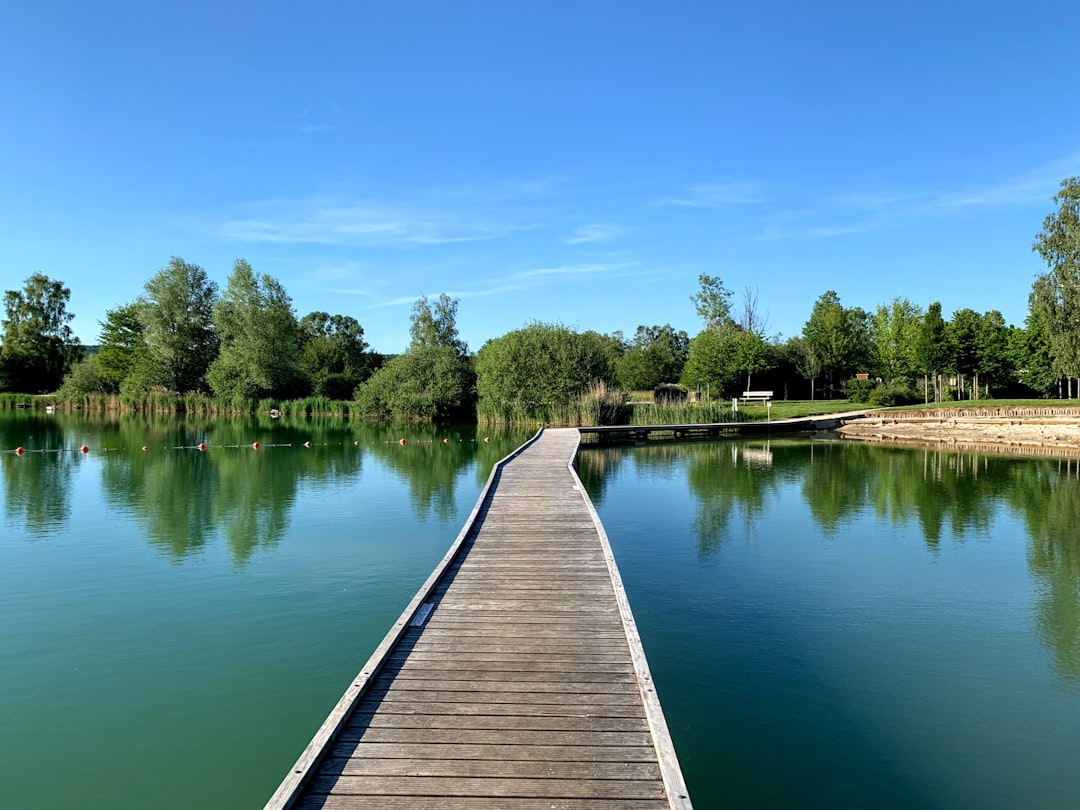Introduction to Gallup Park’s Wooden Bridge Replacement Project
The history of the iconic wooden bridge at Gallup Park dates back to the 1970s when it was first constructed, marking the beginning of a beloved landmark’s legacy. For over fifty years, this wooden structure spanned the Huron River, becoming an integral part of the park’s identity and a cherished location for visitors. Its unique arched design not only served as a functional pathway but also as a visual masterpiece that added character to the natural surroundings of Gallup Park. The bridge’s picturesque location over the Huron River made it a popular spot for photos and leisurely walks, attracting locals and tourists alike.
An example of the bridge’s significance is how it became a symbol of connection and tranquility within Gallup Park, offering a serene pathway for park enthusiasts to immerse themselves in nature and enjoy the scenic views of the Huron River. Families, friends, and solo visitors alike found solace in the bridge’s ambiance, creating lasting memories and forging connections with the park’s serene environment. The bridge’s historical importance goes beyond its physical structure; it represents a shared heritage, a place of solace, and a tangible link to the past for those who have traversed its weathered planks over the years.
 The History of Gallup Park’s Iconic Wooden Bridge
The History of Gallup Park’s Iconic Wooden Bridge
The wooden bridge at Gallup Park, with its arched design and scenic location over the Huron River, served as a beloved landmark for park visitors for decades. This iconic structure, constructed in the 1970s, not only provided a means of crossing the river but also became a symbol of unity and tranquility within the park. An example of its historical significance is how the bridge’s unique architecture and inviting atmosphere made it a popular destination for families, couples, and nature enthusiasts seeking a peaceful retreat in the heart of Ann Arbor.
Over the years, the wooden bridge at Gallup Park evolved into more than just a crossing; it became a cultural touchstone and a gathering place for community events and celebrations. For instance, residents fondly recall picnics by the bridge, wildlife sightings from its vantage points, and the simple joy of walking across its sturdy planks on a sunny afternoon. The bridge’s legacy as a symbol of connection and natural beauty has left an indelible mark on the hearts of all who have experienced its charm, underscoring its importance in the tapestry of Gallup Park’s history.
Reasons for Emergency Demolition
The decision to demolish the wooden bridge at Gallup Park was prompted by significant structural issues that posed a risk to public safety. During routine inspections, alarming signs of deterioration were discovered, necessitating the immediate closure of the bridge to prevent any potential accidents or injuries. An example of the urgent need for demolition was the visible wear and tear on key structural components, such as support beams and decking, which compromised the bridge’s stability.
City officials, in collaboration with engineering experts, expedited the demolition process to address the risks posed by the bridge’s deteriorating condition and ensure the well-being of park visitors and commuters. An example of the urgency of the situation was the swift action taken to close off access to the bridge and initiate the demolition plan to mitigate any potential hazards. By prioritizing public safety and proactively addressing the structural issues, authorities demonstrated their commitment to protecting the community and preserving the integrity of Gallup Park’s infrastructure.
Impact on the Community
The closure of the wooden bridge at Gallup Park had a significant impact on the community, disrupting commuting routes and access to the park’s amenities. For regular visitors and commuters accustomed to using the bridge as a vital link, the sudden closure raised concerns about alternative routes and the timeline for the new bridge construction. An example of the disruption caused by the closure was the inconvenience faced by residents and visitors who relied on the bridge for daily commutes and recreational activities within the park.
City officials engaged with the community to address their concerns and provide updates on the progress of the replacement project, fostering a sense of transparency and collaboration. An example of community involvement was the active participation of residents in feedback sessions and public forums to share their perspectives on the bridge closure and the upcoming construction plans. By working closely with stakeholders and keeping the community informed, authorities sought to mitigate the impact of the bridge closure and ensure that residents felt heard and supported during this transitional period.
 Replacement Project Details
Replacement Project Details
The replacement project for the wooden bridge at Gallup Park aims to enhance safety, accessibility, and aesthetic appeal within the park. The new bridge design includes wider lanes to accommodate pedestrians, cyclists, and vehicles, promoting multi-modal transportation options and active lifestyles among park visitors. An example of the project’s focus on safety is the incorporation of designated pedestrian pathways, improved lighting, and clear signage to enhance visibility and ensure a secure environment for all users.
Wade Trim, a reputable engineering firm, is overseeing the detailed design and construction of the replacement bridge, ensuring quality workmanship and adherence to safety standards. An example of the firm’s expertise is their commitment to sustainable design practices, such as using natural material accents and energy-efficient features that minimize environmental impact and promote long-term durability. By aligning the replacement project with the city’s vision for sustainable infrastructure and improved connectivity, the new bridge at Gallup Park reflects a forward-thinking approach to enhancing public spaces for the benefit of current and future generations.
Design Features and Safety Measures
The design of the new bridge at Gallup Park integrates natural material accents to blend harmoniously with the park’s environment, enhancing its aesthetic appeal and durability. For example, the use of locally sourced wood and stone in the bridge’s construction not only adds a touch of rustic charm but also ensures a seamless integration with the park’s natural surroundings, creating a visually pleasing and environmentally conscious structure. The incorporation of sustainable design elements, such as eco-friendly materials and energy-efficient lighting, underscores the city’s commitment to environmental stewardship and responsible infrastructure development.
Safety measures in the new bridge design focus on optimizing traffic flow, providing clear pathways for pedestrians and cyclists, and enhancing visibility for all park users. An example of the safety enhancements is the implementation of traffic calming measures, such as speed reduction zones and designated crossing points, to ensure the safety of pedestrians and cyclists navigating the bridge. By prioritizing the well-being of park visitors and promoting a user-friendly environment, the new bridge design aims to create a welcoming and secure space that encourages active transportation and community engagement within Gallup Park.
Timeline for Construction and Completion
Construction of the replacement bridge at Gallup Park commenced in November, marking the beginning of a transformative phase for the park’s infrastructure. The project timeline estimates completion by summer 2024, allowing residents and visitors to enjoy the enhanced amenities and improved accessibility within the park. An example of the project’s progress is the diligent efforts of city officials and construction teams to expedite the construction process without compromising on quality or safety standards, ensuring the timely completion of the new bridge.
City authorities are working collaboratively with engineering experts and construction teams to monitor the project’s progress and address any challenges that may arise during the construction phase. An example of the city’s commitment to timely completion is the strategic planning and resource allocation to streamline the construction process and deliver the new bridge as scheduled. By prioritizing efficiency and quality in every aspect of the project, authorities aim to provide residents and visitors with a seamless transition to the enhanced amenities and features that the new bridge will offer within Gallup Park.
Arbor Move Real Estate Team: Your Trusted Guide in Ann Arbor Living
For instance, imagine you are a first-time homebuyer in Ann Arbor seeking a property that suits your lifestyle and budget. The Arbor Move Team would not only assist you in finding your dream home but also provide valuable insights and support throughout the buying process [Customer Product Context]. By leveraging their expertise and vast network of professional resources, the team ensures that your real estate journey is smooth, stress-free, and tailored to meet your specific needs [Customer Product Context]. Whether you are looking to buy, sell, or invest in property in Ann Arbor, Arbor Move’s personalized approach and commitment to client satisfaction make them a reliable partner in your real estate endeavors [Customer Product Context].
 Community Engagement and Feedback Initiatives
Community Engagement and Feedback Initiatives
Encouraging community members to actively participate in shaping the future of Gallup Park is essential to ensuring that the replacement project aligns with the needs and expectations of residents and park enthusiasts. City officials have organized public forums and engagement sessions to gather input from a diverse range of stakeholders, including residents, nature enthusiasts, and cyclists, to inform the design and features of the new bridge. An example of the community’s involvement is the collaborative efforts between city authorities and residents to share feedback, suggestions, and concerns regarding park improvements and the replacement project.
One recent example of community engagement was a feedback session held at a local community center, where residents voiced their perspectives on safety, accessibility, and environmental sustainability in the design of the new bridge. By actively involving residents in the decision-making process and seeking their input on key aspects of the replacement project, city officials demonstrate a commitment to transparency and inclusivity in shaping the future of Gallup Park. The collaborative approach between stakeholders and decision-makers underscores the city’s dedication to creating public spaces that reflect the desires and values of the community, ensuring that Gallup Park remains a vibrant and welcoming destination for all who visit.

